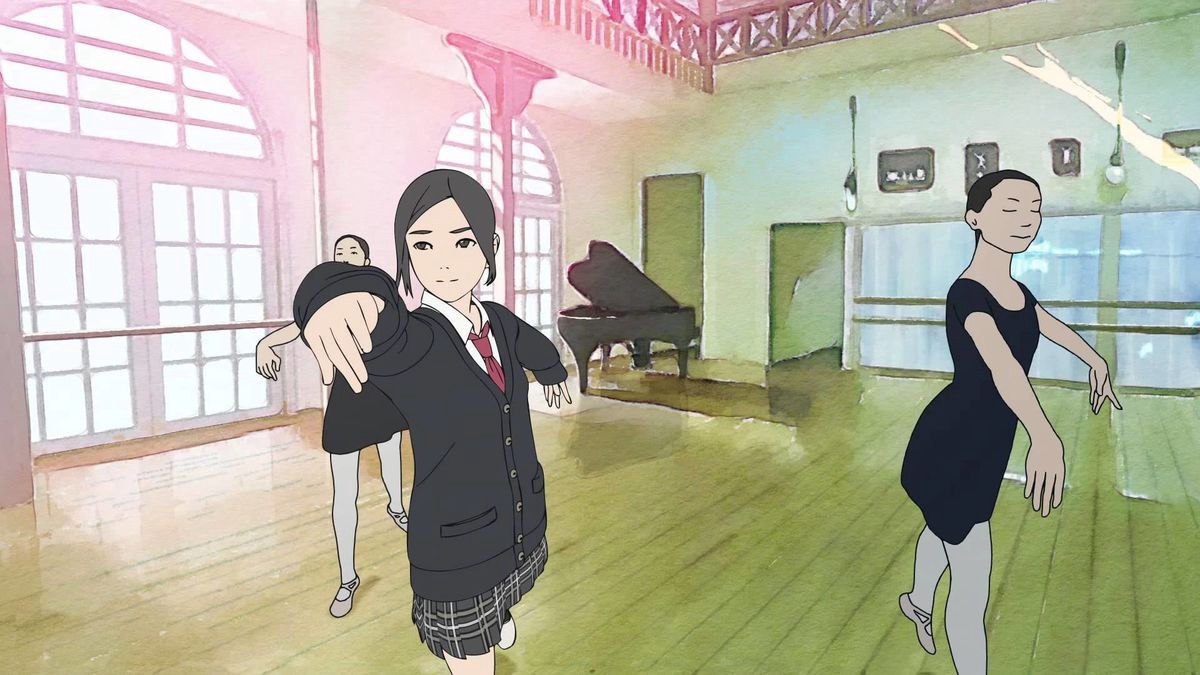The Case of Hana and Alice (Iwai Shunji, 2015)

What do you do if you want to make a prequel to one of your best movies, one built as much around the performances of two terrific young actresses more than anything else, but a decade has passed and the actresses are now much too old to be playing the same characters? Well, if you’re Iwai Shunji, you make it as an anime. That’s the case with The Case of Hana and Alice, the prequel to his 2004 film Hana and Alice. Anne Suzuki and Aoi Yū (respectively) reprise their roles in voice form with an origin story for the two slightly odd friends. In most respects, the film is of a piece with the original: both are slice of life films about teen girls, with meandering plots filled with small moments of wonder and mystery. That they could be so similar and yet be made in dramatically different media speaks to the paucity of Hollywood imagination, where “animated” is a genre unto itself (an almost exclusively kid-oriented one), rather than merely one method among many for telling a story.
Alice moves into a new house and starts a new school in the 9th grade. She’s immediately set upon by her classmates because her assigned desk belonged to a boy who is rumored to have died the year before, which the students have interpreted as some kind of occult phenomenon. She fights back (ably beating up one boy who tries to torment her) and sets out to solve the mystery of the former student’s disappearance, which leads her to her reclusive neighbor, Hana, who sat behind him in class the year before. The two eventually join forces, with Hana coming up with various schemes to track down the boy’s father and Alice lackadaisically playing along.
This leads to a remarkable yet entirely tangential sequence, as Alice, accidentally following and then befriending the wrong old man, finds herself in a miniature remake of Akira Kurosawa’s masterpiece Ikiru. With several shots lifted straight out of the Kurosawa, she befriends her wistful elder, visiting a crowded restaurant and a swing set with him. It’s a completely inessential sidetrack, having literally nothing to do with furthering the plot, and it’s absolutely perfect. A film about the wonder and possibility of youth taking the time to meditate for a bit on what it means to be old and alone.
The Kurosawa thing makes me think about the connections between Japanese feature film and anime. One of his contemporary Yasujiro Ozu’s more famous recurring stylistic features is the pillow shot, a short scene of nothing in particular, a sky, a city street, some power lines. They serve no narrative purpose whatsoever, but they help with the pacing of his films, allowing a momentary breath between scenes, giving the audience a space to think about what they’re seeing. Such shots are also a common feature of manga and anime, individual panels with no story-related content that simply serve to break-up the flow of the narrative, and they’re as anathema to traditional American comic book making as Ozu’s pillow shots are to standard Hollywood editing. In the American tradition, forward movement of the plot is everything and anything else is a waste of time. This is on its face an absurdly limiting idea of narrative art, but it persists nonetheless (think of all the people out there complaining about Once Upon a Time in Hollywood‘s leisurely pacing as a failure to properly edit).
I don’t know much about anime, but I’ve watched a few series and movies and have maintained subscriptions to both Crunchyroll and Funimation for awhile, despite not really using them as much as I should (as is the case with all of my streaming services). This summer the tragic fire at Kyoto Animation finally spurred me to watch some of their series: Sound! Euphonium, of which last year’s wonderful Liz and the Bluebird was a spin-off; and K-On!, an earlier series that is also about a high school musical group. They’re terrific, almost directionless shows (K-On! more so than the other: it has an episode that is literally about it being rainy outside, and another about how it’s too hot in the music room) that aren’t so much about growing up or coming of age as they are simply about being young. The Case of Hana and Alice is that kind of movie. And maybe it’s that I’m becoming more and more conscious of the fact that I’m nearer in age to the elderly businessman than I am to the kooky teen girls, but it’s the kind of movie you don’t want to miss.
